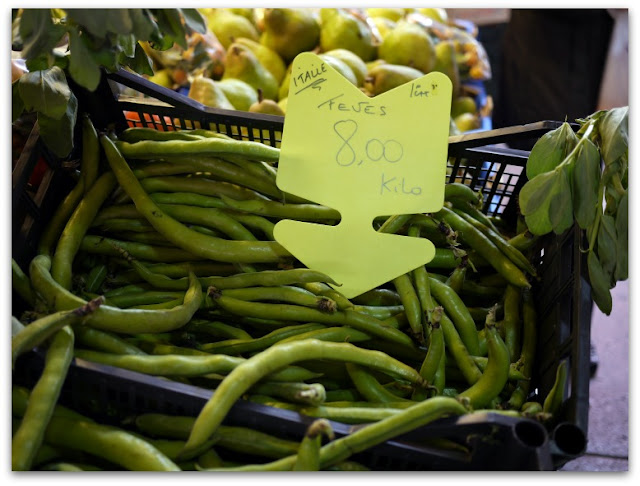Lemons, lemons everywhere! At least that's what it seems during the 19 fun-filled days of Menton's annual Fête du Citron or Lemon Festival.
I got caught up in the lemon frenzy this Sunday when I bought a big bag of lemons from the Menton market and then poked through my recipes for a lemon dessert that could be made by anyone, including my dear friend Puddy, who never believes me when I say that something I served her was easy to make.
This pudding is magic. During baking, it separates into two layers. The top becomes a lighter than air sponge cake and underneath is a luscious lemon curd. It's fabulous served warm or cold but I think warm is better.
This pudding is magic. During baking, it separates into two layers. The top becomes a lighter than air sponge cake and underneath is a luscious lemon curd. It's fabulous served warm or cold but I think warm is better.
 |
| Citrus vendor in Menton |
I found the recipe in my late mother's recipe collection. For the life of me, I can't remember her ever having made it but there it was, mixed in with all of her other fruit dessert recipes.
Since finding it, I've made it often at home, for my Seniors' baking group, and given it out to friends who often ask for it. It always get rave reviews. The last time I made it was for lunch during our annual Olive Harvest Party and It was devoured minutes after I set it on the table.
Puddy, this pudding is for you!
Lemon Sponge Pudding
You can make this pudding with lemons or Meyer lemons with the same results. Sometimes I add 1/4 teaspoon of zest from a Keffir lime and it turns it into something more exotic. If you find lemons from Menton, definitely use them!
325°F/175°C
30-35 Minutes
Serves 6
Equipment
9"x9" baking dish or 8" (20cm) round dish or 6- 6 ounce (8cm) ramekins
Roasting pan large enough to accommodate your baking dish or ramekins with room for water
Microplane or other fine grater
Stand mixer or hand held mixer
Ingredients
3 tablespoons (43g) unsalted butter, softened
2/3 cup (150g) granulated sugar
pinch of salt
3 large eggs, separated
3 tablespoons (26g) all purpose flour
1 cup (225g) full fat or partly skimmed milk
6 tablespoons or 3 ounces (50 g) fresh lemon juice
zest of 2 lemons
Method
1. Preheat the oven to 325°F/175°C. Set your oven rack to the lowest level. Butter your baking dish or ramekins and set aside.
2. Put some water on to boil. You'll need enough boiling water to come up halfway up the sides of your baking dish once you place it in the roasting pan.
3. In a large bowl, mix together the butter, sugar, zest, egg yolks and salt until the mixture is smooth and uniform. Whisk in the lemon juice, flour and finally the milk. Set aside.
4. In your mixer or with hand held beaters, beat the egg whites until stiff but not dry.
5. Add the beaten egg whites to the first mixture and using a spatula, gently mix the two together. Use your whisk and whisk the mixture to make sure the egg white is fully incorporated and the mixture is uniform. The mixture will look curdled but that's OK.
6. Pour the batter into the baking dish or divide it evenly amongst the ramekins.
7. Place the baking dish or ramekins into the roasting pan.
8. Place the roasting pan into the oven and add boiling water to it to come up to half way up the sides of your baking dish or ramekins.
9. Bake for 30-35 minutes.
10. Remove the baking dish from the roasting pan.
11. Allow to the pudding to cool and dust with icing sugar before serving.
Tips
I recommend that you place the baking dish or dishes in the roasting pan, put it in the oven and then add the boiling water. Carrying a roasting pan with boiling water is a recipe for burns! When the baking is done, remove the baking dish from the roasting pan and leave the roasting pan with the water in the oven to cool. If you need the oven and have to remove the roasting pan, do so after you've removed the baking dish. The water level will have lowered somewhat and be safer to remove.
Tips
I recommend that you place the baking dish or dishes in the roasting pan, put it in the oven and then add the boiling water. Carrying a roasting pan with boiling water is a recipe for burns! When the baking is done, remove the baking dish from the roasting pan and leave the roasting pan with the water in the oven to cool. If you need the oven and have to remove the roasting pan, do so after you've removed the baking dish. The water level will have lowered somewhat and be safer to remove.
















